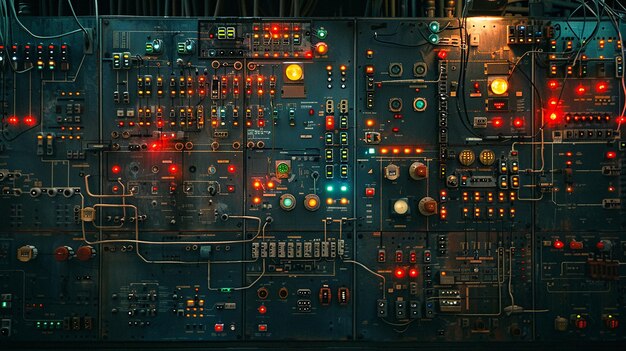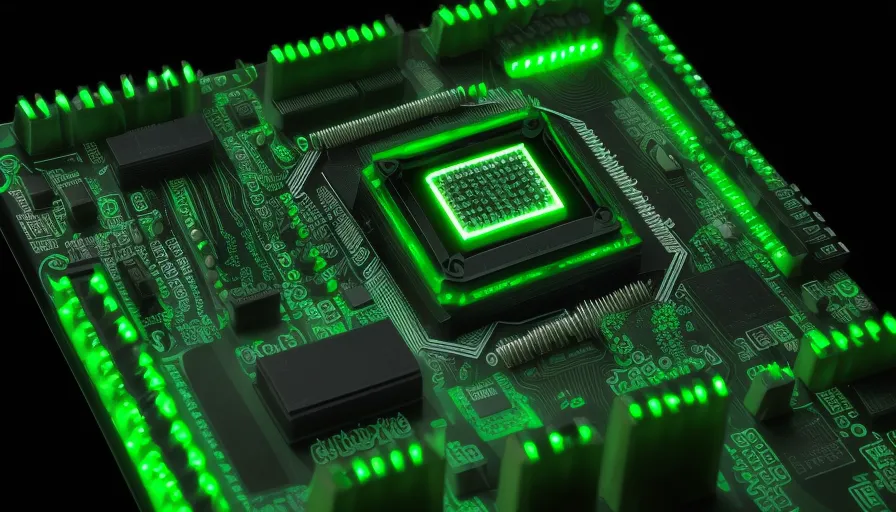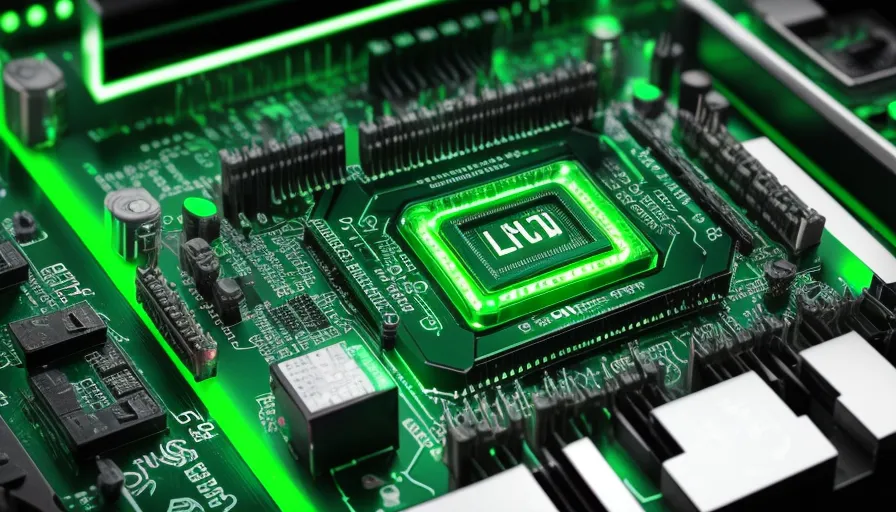When I chose a green light motherboard for my PC, I loved how it added a cool color to my setup. It’s not just about looks; it’s also about solid performance. If you want a vibrant and reliable choice, a green light motherboard is a great pick!
A green light motherboard stands out with its unique color and offers reliable performance. It’s a stylish choice for PC builds, adding both aesthetics and dependable functionality. Ideal for those looking to brighten up their setup while enjoying solid hardware.
In this article, we will discuss the benefits and features of a green light motherboard, including its visual appeal and performance. We’ll explore how it can enhance your PC build and why it might be the perfect choice for your setup.
What is a Green Light Motherboard?
Ever noticed a green light on your motherboard and wondered what it means? This article breaks down the significance of this indicator and how it can help you maintain your computer’s health.
Why Motherboard Indicators Matter
Motherboard indicators like the green light play a crucial role in diagnosing system issues. They offer immediate feedback on whether the motherboard is functioning correctly, helping you troubleshoot problems efficiently.
Understanding Motherboards
Definition and Functionality
A motherboard is the central hub of your computer, connecting the CPU, RAM, and other essential components. It’s responsible for facilitating communication between these parts, ensuring smooth operation.
Key Components and Their Roles
Key components include the CPU socket, RAM slots, and various expansion slots. Each part has a specific role, from processing data to enabling peripheral connections.
The Green Light Indicator
Significance of a Green Light
A green light typically indicates that the motherboard is receiving power and operating correctly. It’s usually a good sign that the system is up and running.
Typical Scenarios for a Green Light
You’ll commonly see a green light when your computer is powered on and functioning without major issues. It’s a standard feature on many modern motherboards.
Troubleshooting Issues with a Green Light Motherboard
When the Green Light is On
If the green light is on but your computer isn’t booting, it might signal minor issues. This light alone doesn’t guarantee that everything is perfect.
Common Problems and Solutions
- Loose Connections: Check and secure all cables.
- Component Issues: Ensure RAM and CPU are properly seated.
- Peripheral Conflicts: Disconnect external devices and try booting again.
Step-by-Step Troubleshooting Process
- Verify Power Supply Connections: Ensure all connections are tight.
- Inspect Internal Components: Check RAM, CPU, and other components for proper installation.
- Consult the Manual: Refer to the motherboard manual for specific LED indicators and troubleshooting steps.

Comparison with Other Motherboard Indicators
Red Light Indicators
A red light usually signals an error or problem, such as overheating or hardware failure. It’s often a warning sign that needs immediate attention.
Blue Light Indicators
A blue light typically indicates that the motherboard is in standby or sleep mode. It’s generally less alarming but worth noting if you experience other issues.
Yellow Light Indicators
A yellow light can suggest warnings or minor issues. Check the manual for precise meanings and solutions.
Maintenance and Care Tips
Regular Cleaning Practices
Keep your motherboard clean by gently dusting it with compressed air. Avoid using liquids or abrasive materials to prevent damage.
Proper Handling and Installation
Handle the motherboard with care, ensuring it’s installed correctly to avoid physical damage or connection issues.
Testing and Diagnosing a Motherboard
Essential Tools for Testing
You’ll need tools like a multimeter, power supply tester, and diagnostic cards to test the motherboard’s functionality.
Testing Procedures and Techniques
- Check Voltage Outputs: Use a multimeter to verify proper voltages.
- Run Diagnostic Tests: Utilize diagnostic cards to check for error codes.
- Test Components Individually: Ensure each component is functioning correctly.
Upgrading Your Motherboard
Signs You Need an Upgrade
Consider upgrading if your motherboard is outdated, incompatible with new components, or if you need enhanced performance.
Choosing the Right Replacement
Select a motherboard that fits your current hardware and future needs. Check compatibility with your CPU, RAM, and other components.
Addressing Common Myths
Dispelling Misconceptions
There are many myths about motherboard indicators. For instance, a green light doesn’t always mean everything is perfect, and a red light isn’t always a major disaster. Understanding these myths helps in better maintenance.
Facts vs. Fiction
A green light is generally a positive sign, but it’s not foolproof. Always consider other symptoms and consult your motherboard’s manual for accurate information.
Green Light on motherboard, no Boot.
A green light on your motherboard but no boot can indicate several issues:
- Power Supply Issues: Ensure the power connections are secure and the PSU is functioning correctly.
- RAM Problems: Check if the RAM is properly seated or try different slots.
- Component Compatibility: Verify that all components are compatible and properly installed.
- Motherboard or CPU Fault: Test with another CPU or motherboard if possible.
How does one get FLAWLESS cable management?
To achieve flawless cable management:
- Plan Ahead: Route cables before finalizing the build.
- Use Cable Ties: Secure cables neatly and avoid tangling.
- Utilize Cable Routing Holes: Guide cables through designated paths in the case.
- Keep It Tidy: Regularly adjust and organize cables for a clean look.
First time build, green LED, no display on any port
For a first-time build with a green LED but no display:
- Check Connections: Ensure all power cables and components are properly connected.
- Verify RAM and GPU: Make sure RAM sticks and GPU are securely seated.
- Inspect Display Cables: Confirm cables are connected to the GPU, not the motherboard ports.
Green boot light no display help
If you see a green boot light but no display:
- Check Connections: Verify that all cables are securely plugged in and properly connected.
- Verify RAM and GPU: Make sure they are properly seated in their slots.
- Inspect Display Cables: Confirm they are correctly connected to the GPU.
Desktop PC not turning on, blinking green LED on motherboard
If your desktop PC isn’t turning on and there’s a blinking green LED on the motherboard:
- Check Power Supply: Ensure all power cables are properly connected.
- Inspect RAM and GPU: Verify they are securely seated.
- Consult Manual: The blinking green LED may indicate a specific error; check the motherboard manual for details.
What causes a desktop PC to not turn on?
A desktop PC may not turn on due to:
- Power Supply Issues: Faulty or disconnected cables.
- Loose Connections: Unsecured components like RAM or GPU.
- Motherboard or CPU Problems: Faulty hardware or improper installation.
- Overheating: Dust or poor ventilation causing thermal shutdown.

Why is the green LED on the motherboard blinking?
A blinking green LED on the motherboard often indicates:
- Power Issues: Problems with power supply or connections.
- Hardware Faults: Potential issues with components like RAM or GPU.
- BIOS or POST Errors: The motherboard might be signaling an error during the Power-On Self-Test.
Can a power surge damage a desktop PC?
Yes, a power surge can damage a desktop PC by causing hardware failures or data corruption. It can affect components like the motherboard, power supply, and storage devices. Using a surge protector can help prevent such damage.
FAQs
What should I do if my motherboard has a green light but isn’t booting?
Check all connections, ensure components are properly seated, and refer to the motherboard manual for troubleshooting.
Can a green light indicate a problem?
While a green light usually means normal operation, it could sometimes signal minor issues. Always consider other signs and consult the manual.
How often should I check my motherboard?
Regular maintenance and checks are advisable, especially if you encounter performance issues or system problems.
Are there different types of green lights on motherboards?
Yes, different green lights may indicate various statuses. Refer to the motherboard manual for specific meanings.
Can a green light prevent hardware damage?
A green light indicates power and operation but doesn’t prevent hardware damage. Proper maintenance and handling are key to hardware longevity.
What does a green light mean on a motherboard?
A green light on a motherboard typically indicates power is being supplied and the system is in a standby or operational state. However, it may also signify specific status or error codes depending on the motherboard model. Consult the motherboard manual for precise meanings.
What to do if your motherboard has a green light but won’t turn on?
If your motherboard has a green light but won’t turn on:
- Check Power Connections: Ensure all cables are securely connected.
- Verify Component Seating: Make sure RAM, GPU, and other components are properly seated.
- Inspect for Short Circuits: Look for any shorts or loose screws.
Why is there a green light in my PC?
A green light in your PC typically indicates power is being supplied and the system is in standby or operational mode. It may also show specific status or error codes depending on the motherboard. Check the motherboard manual for detailed information.
What does green light mean on ASUS?
On an ASUS motherboard, a green light usually means the system is receiving power and is in a standby or operational state. For specific meanings, refer to the motherboard manual as it may indicate various statuses or errors.
ASUS motherboard light codes
ASUS motherboard light codes indicate different system statuses:
- Green Light: Power is on, and the system is in standby or operational.
- Red Light: Possible hardware issue or error.
- Orange Light: System in sleep mode or power-saving state.
White and green light on motherboard
White Light: Power is on, and the system is booting.
Green Light: System is operational or in standby mode.
Green boot light on motherboard MSI
A green boot light on an MSI motherboard usually indicates that the motherboard is receiving power and the system is in the boot process. If there’s no display or further issues, check connections and components or consult the manual for troubleshooting steps.
Does green light mean charging?
A green light typically means the device is powered on or operational, not necessarily charging. For charging status, check the device’s specific indicators or manual.
What do motherboard lights mean?
Motherboard lights indicate system status:
- Green: Power is on, and the system is operational.
- Red: Hardware issue or error.
- Orange/Amber: System in standby or power-saving mode.
Conclusion
A green light on your motherboard generally indicates that it’s receiving power and functioning correctly. However, it’s crucial to understand that this light alone doesn’t guarantee everything is perfect.Motherboard indicators, like the green light, provide valuable feedback on your system’s health. By understanding what these lights mean and how to address potential issues, you can ensure your computer runs smoothly.

Leave a Reply